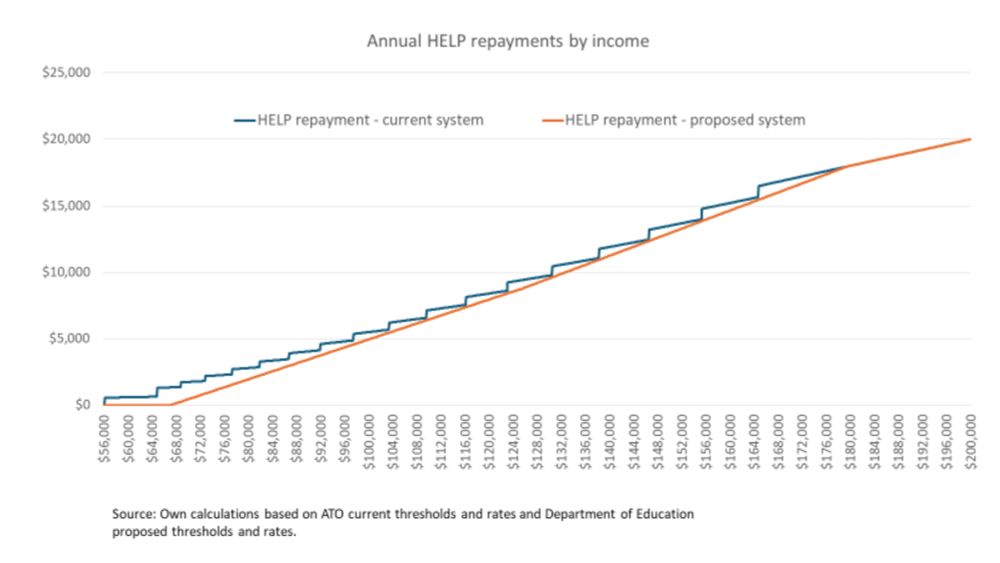Andrew Norton
@andrewjnorton.bsky.social
450 followers
250 following
100 posts
Australian higher education policy
andrewnorton.id.au
Posts
Media
Videos
Starter Packs
Andrew Norton
@andrewjnorton.bsky.social
· Aug 29

Why is demand for mature-age undergraduate education shrinking?
I have an article in The Conversation this morning on why demand for undergraduate higher education has been weak in recent years. I looked at school leavers in this July 2025 post. This post expan…
andrewnorton.id.au
Andrew Norton
@andrewjnorton.bsky.social
· Aug 25

University under-enrolment in the COVID and after years
Recently the Department of Education published 2021-2022 data on payments under the Higher Education Continuity Guarantee, a 2021-23 Coalition program to compensate universities for under-enrolment…
andrewnorton.id.au
Andrew Norton
@andrewjnorton.bsky.social
· Aug 22

Has funding for Commonwealth supported students been cut?
With universities back job shedding, academics and their unions are looking for someone to blame. University leaders and consultants are being attacked for poor decisions. The government also gets …
andrewnorton.id.au
Andrew Norton
@andrewjnorton.bsky.social
· Aug 18

Gender-based violence legislation, Part 3: Reporting and penalties for higher education providers
The first post in this series outlined the meaning of gender-based violence and processes that apply to all higher education staff and students. The second post looked at processes when a complaint…
andrewnorton.id.au
Andrew Norton
@andrewjnorton.bsky.social
· Aug 17

Gender-based violence legislation: Part 2, Processes for victims and perpetrators
My first post on the higher education gender-based violence bill and its draft code looked at how gender-based violence is defined and the broad obligations placed on higher education providers and…
andrewnorton.id.au
Andrew Norton
@andrewjnorton.bsky.social
· Aug 14

Gender-based violence legislation: Part 1, Definitions and requirements for all higher education providers, staff and students
Legislation on ‘gender-based violence’ in higher education is back in Parliament. Its principal purpose is to provide a legal foundation for a National Higher Education Code to Prevent …
andrewnorton.id.au
Andrew Norton
@andrewjnorton.bsky.social
· Aug 11

University funding systems and what graduates see as important in a job
For a side-project I’ve recently engaged with the subject of whether higher education funding systems shape the educational and career choices of students and graduates. On one theory, where …
andrewnorton.id.au
Andrew Norton
@andrewjnorton.bsky.social
· Jul 31

Will the new HELP repayment system make high EMTR problems better or worse?
The new HELP repayment system being legislated this week will move from repaying a % of total income to a % of income above the repayment threshold, a marginal system. In introducing the bill to Pa…
andrewnorton.id.au
Andrew Norton
@andrewjnorton.bsky.social
· Jul 29
Andrew Norton
@andrewjnorton.bsky.social
· Jul 29

The new HELP repayment system and lifetimes of student debt
The prime minister says that a degree should not come with a lifetime of debt. For that goal, the government’s HELP legislation introduced last week is contradictory. It will cut all debt owe…
andrewnorton.id.au
Andrew Norton
@andrewjnorton.bsky.social
· Jul 28

International students and the rental market
The housing section of the RBA’s report last week on international students and the economy had higher education media dismissing the contribution of students to rent increases as a ‘fu…
andrewnorton.id.au
Andrew Norton
@andrewjnorton.bsky.social
· Jul 24

The history and politics of the first student debt repayment threshold
The government’s HELP legislation, cutting student debts by 20% and introducing a new repayment system, was introduced into Parliament yesterday. While I have criticisms of the 20% cut, it wi…
andrewnorton.id.au
Andrew Norton
@andrewjnorton.bsky.social
· Jul 23

Labor’s new bill would cut HELP loans by 20%. But it also risks locking some graduates into a ‘debt treadmill’
The debt changes will deliver major benefits to recent graduates, but much less to current students and nothing to future students.
theconversation.com
Andrew Norton
@andrewjnorton.bsky.social
· Jul 15
Andrew Norton
@andrewjnorton.bsky.social
· Jul 15

Where are the young people who are not at university?
Earlier this month I wrote a post showing that higher education enrolments at age 19 years, and the domestic participation rate at age 19, were down in 2023 compared to 2022. This post explores pos…
andrewnorton.id.au
Andrew Norton
@andrewjnorton.bsky.social
· Jul 15
Andrew Norton
@andrewjnorton.bsky.social
· Jul 15






